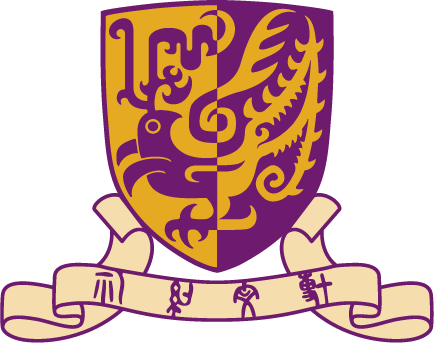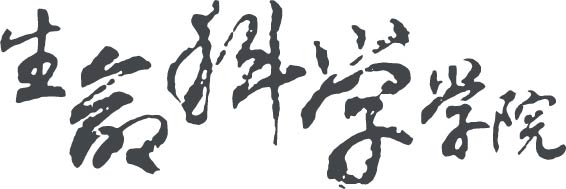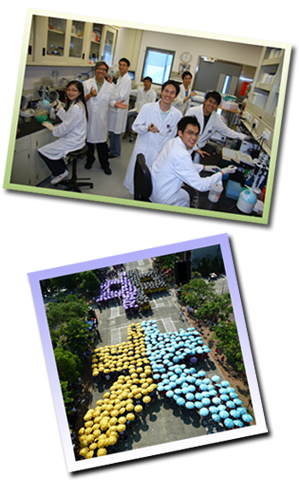|
Primavera J.H., Friess, D.A., Van Lavieren, H., Lee S.Y. 2018. Chapter 1. The mangrove Ecosystem. Pp.1- 34 In Sheppard C. (ed) World Seas: an Environmental Evaluation. Second edition. Volume 3: Ecological Issues and Environmental Impacts. Academic Press. ISBN 9780128050521
Rivera-Monroy, V., Lee S.Y., Kristensen, E., Twilley, R.R. 2017. Chapter 1 Introduction. Pp. 1-16. In Rivera-Monroy, V., Lee S.Y., Kristensen, E., Twilley, R.R. (eds) Mangrove Ecosystem Structure and Function: a biogeographic perspective. Springer, New York. ISBN 9783319622040
Lee S.Y., Rivera-Monroy, V., Kristensen, E., Twilley, R.R. 2017. Epilogue. Pp. 383-386. In Rivera-Monroy, V., Lee S.Y., Kristensen, E., Twilley, R.R. (eds) Mangrove Ecosystem Structure and Function: a biogeographic perspective. Springer, New York. ISBN 9783319622040
Lee S.Y., Jones, G., Diele, K., Nordhaus, I., 2017. Biodiversity. Pp. 55-86. In Rivera-Monroy, V., Lee S.Y., Kristensen, E., Twilley, R.R. (eds) Mangrove Ecosystem Structure and Function: a biogeographic perspective. Springer, New York. ISBN 9783319622040
Primavera, J.H., Lee S.Y. 2015. The Magical Mangroves of KII. Pp.322-330 In: Hegan, A. (Ed.). (2015). No More Endings: Saving Species One Story at a Time. Melbourne, Florida: Motivational Press.
Lee S.Y. 2015. Chapter 9, Ecology of Brachyura. Pp.469-543. In Castro, P., Davie, P., Guinot, D., Schram, F., J.C. von Vaupel Klein (Eds) Treatise in Zoology. The Crustacea. Brill, Leiden, the Netherlands. ISBN 9789004188730
Hutchison, J., Philipp, D.P., Claussen, J.E., Aburto-Oropeza, O., Carrasquilla-Henao, M., Castellanos- Galindo, G.A., Costa, M.T., Daneshgar, P.D., Hartmann, H.J., Juanes, F., Khan, M.E., Knowles, L., Knudsen, E., Lee S.Y., Murchie, K.J., Tiedemann, J., zu Ermgassen, P., Spalding, M. 2015. Building an expert judgment-based model of mangrove fisheries. Pp. 17-42 In: Mangrove as Fish Habitat. (eds) Murchie, K.J., Daneshgar, P.P. American Fisheries Society. ISBN-13: 9781934874424
|
|
Pitt K.A., Lee S.Y., Connolly R.M., Bui, THH, Doriean N. 2018. Sources and fates of organic matter in constructed versus natural coastal waterways. Marine Pollution Bulletin 135:505-513
Adame, M.F., Rozainah M.Z., Fry B., Chong V.C., Then Y.H.A., Brown C.J., Lee S.Y. 2018. Loss and recovery of carbon and nitrogen after mangrove clearing. Ocean and Coastal Management 161:117- 126
Natin P., Lee S.Y. 2018. Estuarine caridean shrimp (Palaemon debilis Dana, 1852) (Decapoda: Caridea) can differentiate olfactory cues from different mangrove species for microhabitat selection. Journal of Experimental Marine Biology and Ecology 501:99-108
Henderson C.J., Stevens T.F., Gilby B., Lee S.Y. 2018. Spatial conservation of large mobile elasmobranchs requires an understanding of spatio-temporal seascape utilisation. ICES Journal of Marine Science 75: 553-561.
Ouyang, X., Lee S.Y., Connolly, R.M. 2018. Partitioning of sources of CO2 efflux in establishing mangrove ecosystems using experimental isotope labelling of seedlings. Limnology and Oceanography 63: 731- 340. DOI: 10.1002/lno.10663
Ouyang, X., Lee S.Y., Connolly, R.M., Kainz, M. 2018. Spatially explicit valuation of wetlands for cyclone mitigation in Australia and China. Scientific Reports 8:3035. DOI:10.1038/s41598-018-21217-z, 9pp.
Peng, Y.S., Zhang, M., Lee S.Y. 2017. Food availability and reduced predation risk drive the distributional patterns of two pulmonate gastropods in a mangrove-saltmarsh transitional habitat. Marine Environmental Research 130:21-29
Henderson, C.J., Gilby, B., Lee S.Y., Stevens, T.F. 2017. Contrasting effects of habitat complexity and connectivity on biodiversity in seagrass meadows. Marine Biology 164:117 DOI 10.1007/s00227-017-3149-2
Kamal, S., Warnken, J., Bakhtiyari, M., Lee S.Y.* 2017. Sediment distribution in shallow estuaries at fine scale: in situ evidence of 3D structural complexity effects by mangrove pneumatophores. Hydrobiologia 803:121-132. DOI: 10.1007/s10750-017-3178-3
Kristensen, E., Lee S.Y., Mangion, P., Quintana, C.O., Valdemarsen, T. 2017. Trophic fractionation of stable isotopes and food source partitioning by leaf-eating crabs in mangrove environments. Limnology and Oceanography 62:2097-2112. DOI: 10.1002/lno.10553
Henderson, C.J., Olds, A., Lee S.Y., Gilby, B.L., Maxwell, P.S., Connolly, R.M. and Stevens, T.F. 2017. Marine reserves and seascape context shape fish assemblages in seagrass. Marine Ecology Progress Series 566:135-144.
Ouyang, X., Lee S.Y., Connolly, R.M. 2017. Global patterns of root decomposition rates and the fate of root carbon production in mangroves and saltmarsh. Earth Sciences Reviews 166:53-63.
Lee S.Y.*, Khim, J.-S. 2017. Hard science is essential to restoring soft-sediment intertidal habitats in East Asia. Chemosphere 168:765-776
Abudullah, M.M., Lee S.Y. 2017. Structure of mangrove meiofaunal assemblages driven by local sediment conditions in subtropical southeast Australia. Estuarine Coastal and Shelf Science http://dx.doi.org/10.1016/j.ecss.2016.10.039
Spencer D.M., Brown I.W., Lee S.Y., Lemckert C.J. 2017. Physical oceanographic processes affecting spanner crab (Ranina ranina) catchability – a review. Fisheries Research 186:248-257.
Ouyang, X., Lee S.Y., Connolly, R.M. 2017. Structural equation modelling unravels factors regulating sediment carbon stock and CO2 flux in a subtropical mangrove. Science of the Total Environment 578:513-522
Kwon, B.-O., Lee Y., Park, J., Ryu, J., Hong, J., Son, H., Lee S.Y., Nam, J., Koh, C-H., Khim, J.S. 2016. Temporal dynamics and spatial heterogeneity of microalgal biomass in the intertidal flats of the Saemangeum area, Korea. J Sea Research 116:1-11.
Werry, J.M., Sumpton, W., Otway, N., Lee S.Y.*, Mayer, D. 2016. Rainfall: a key driver for movement of bull shark, Carcharhinus leucas, into beach areas. Global Ecology and Conservation. (In revision)
Friess, D., Lee S.Y., Primavera, J.H. 2016. Turning the tide on mangrove loss. Marine Pollution Bulletin 109:673-675.
Henderson, C.J., Stevens, T., Lee S.Y. 2016. Assessing the suitability of a non-lethal biopsy punch for sampling fish muscle tissue. Fish Physiology and Biochemistry 42:1521-1526
Peng, Y., Zheng, M., Zheng Z., Wu, G., Chen, Y., Xu, H., Tian, G., Peng, S., Chen, G., Lee S.Y. 2016. Virtual increase or latent loss? A reassessment of mangrove populations and their conservation in Guangdong, southern China. Marine Pollution Bulletin 109:691-699.
Harada, Y., Lee S.Y.* 2016. Opportunistic leaf foraging behavior in the mangrove sesarmid crab (Neosarmatium trispinosum) maximizes nutrient intake in a low-quality food environment. Estuarine, Coastal and Shelf Science 174:41-48.
Peng Y., Diao J., Zheng M., Guan D., Zhang R., Chen G., Lee S.Y. 2016. Early growth adaptability of four mangrove species under the canopy of an introduced mangrove plantation: implications for restoration. Forest Ecology and Management 373:179-188
Van de Merwe, J.P., Lee S.Y., Connolly, R.M., Pitt, K., Steven, A. 2016. Assessing temporal and spatial trends in estuarine nutrient dynamics using a multi-species stable isotope approach. Ecological Indicators 67:338-345
M.M. Abdullah, Lee S.Y. 2016 Meiofauna and depositing crabs: is the interaction physical or trophic? Journal of Experimental Marine Biology and Ecology 479:69-75.
Lee S.Y.* 2016. From blue to black: anthropogenic forcing of carbon and nitrogen influx in mangrove-lined estuaries in the South China Sea. Marine Pollution Bulletin 109:682-690.
Alberts-Hubatsch, Lee S.Y., H., Nordhaus, I., Diele, K., Meynecke, J.-O., Wolff, M. 2016. Life-history, movement and habitat use of Scylla serrata – current knowledge and future challenges. Hydrobiologia 763:5-21. DOI 10.1007/s10750-015-2393-z.
Bui, H.T.H., Lee S.Y.* 2015. Potential contributions of gut microbiota to the nutrition of the detritivorous sesarmid crab Parasesarma erythodactyla. Marine Biology 162: 1969-1981 (DOI: 10.1007/s00227- 015-2723-8)
Morris, C., Lee S.Y.*, van de Merwe, J. 2015. δ15N of estuarine fishes as a quantitative indicator of urbanization. Ecological Indicators 56:41-49
Bui, H., Lee S.Y. 2015. Endogenous cellulase production in the leaf litter foraging mangrove crab, Parasesarma erythodactyla. Comparative Biochemistry and Physiology B. 179:27-36
Ouyang, X., Lee S.Y. 2014. Updated estimates of carbon accumulation rates in coastal marsh sediments. Biogeosciences 11: 5057-5071. Doi:10.5194/bg-11-5057-2014.
Alberts-Hubatsch, Lee S.Y., H., Diele, K., Mattias, W., Nordhaus, I. 2014. Microhabitat use of early benthic stage mud crabs (Scylla serrata Forskål, 1775) in eastern Australia. Journal of Crustacean Biology 34:604-610.
Spencer, D., Lemckert, C., Yu, Y., Gustafson, J., Lee S.Y., Zhang, H. 2014. Quantifying dispersion in an estuary: A Lagrangian drifter approach. Journal of Coastal Research SI70:29-34
Kamal, S., Lee S.Y.*, Warnken, J. 2014. Investigating three-dimensional meso-scale habitat complexity and its ecological implications using low-cost RGB-D sensor technology. Methods in Ecology and Evolution 5:845-853.– featured on journal web page and blog+video; ‘Editor’s pick’, short-listed for the Robert May prize in Ecology).
Lee S.Y.*, Primavera J.H., Dahdouh-Geubas F., McKee, K., Bosire J.O., Cannicci, S., Diele, K., Koedam, N., Marchand C., Mendelssohn, I., Mukherjee, N., Record, S. 2014. Ecological role and services of tropical mangrove ecosystems: a reassessment. Global Ecology and Biogeography 23:726-743.
Bui, T.H.H. and Lee S.Y.* 2014. Does ‘you are what you eat’ apply to mangrove grapsid crabs? PLoS One 9(2) : M. Doi :10.1371/journal.pone.0089074 (IF 4.489) 12pp.
Clua, E., Chauvet, C., Read, T., Werry, J., Lee S.Y. 2013. Behavioural patterns of a Tiger Shark (Galeocerdo cuvier) feeding aggregation on a whale carcass in Prony bay, New Caledonia. Marine & Freshwater Behaviour and Physiology 46:1-20.
Werry, J.M., Lee S.Y., Lemckert, C.J., Otway, N. 2012. Natural or artificial? Habitat use by the bull shark Carcharhinus leucas. PLoS One. 7(11):e49796 doi:10.1371/journal.pone.0049796. 17pp.
Lee, K.M., Lee S.Y., Connolly, R.M. 2012. Combining process indices from network analysis with structural population measures to indicate response of estuarine trophodynamics to pulse organic enrichment. Ecological Indicators 18: 652-658.
Meynecke, J.O., Grubert, M., Arthur, J.M., Boston, R. Lee S.Y. 2012. The influence of the La Niña-El Niño cycle on giant mud crab (Scylla serrata) catches in northern Australia. Estuarine, Coastal and Shelf Science 100:93-101
Werry, J.M., Lee S.Y., Otway, N., Hu, Y., Sumpton, W. 2011. A multi-faceted approach for quantifying the estuarine-nearshore transition in the life cycle of the bull shark, Carcharhinus leucas. Marine and Freshwater Research 62: 1421-1431.
Noriega, R., Werry, J.M., Sumpton, W., Mayer, D., Lee S.Y. 2011. Trends in annual CPUE and evidence of sex and size segregation of Sphyrna lewini: management implications in coastal waters of northeastern Australia. Fisheries Research 110: 472-477.
Meynecke, J.-O., Lee S.Y. 2011. Climate-coastal fisheries relationships and their spatial variation in Queensland, Australia. Fisheries Research 110: 365-376.
Lee, K.M., Lee S.Y., Connolly, R.M. 2011. Short-term response of estuarine sandflat trophodynamics to pulse anthropogenic physical disturbance – support for the Intermediate Disturbance Hypothesis. Estuarine, Coastal and Shelf Science 92:639-648.
Lee, K.M., Lee S.Y., Connolly, R.M. 2011. Combining stable isotope enrichment, compartmental modelling and ecological network analysis for quantitative measurement of food web dynamics. Methods in Ecology and Evolution 2: 56-65.
* corresponding author; underlined names are research students with me as principal supervisor
July 2018
|



















